Shiver House: Animal-Like Kinetic Structure Flutters in Response to Wind and Rain
A fascinating new structure set in the grassy park of Louvre-Lens in France asks the question “why do we care more about things we perceive to be alive?” If we can harness that tendency, maybe we could encourage a more emotional connection between ourselves, the shelters we build, and their place in the surrounding ecosystem. Creative studio NEON built “Shiver House V2,” a kinetic cabin covered in 1,100 moving polycarbonate shingles, to demonstrate what a seemingly alive structure can look and feel like.
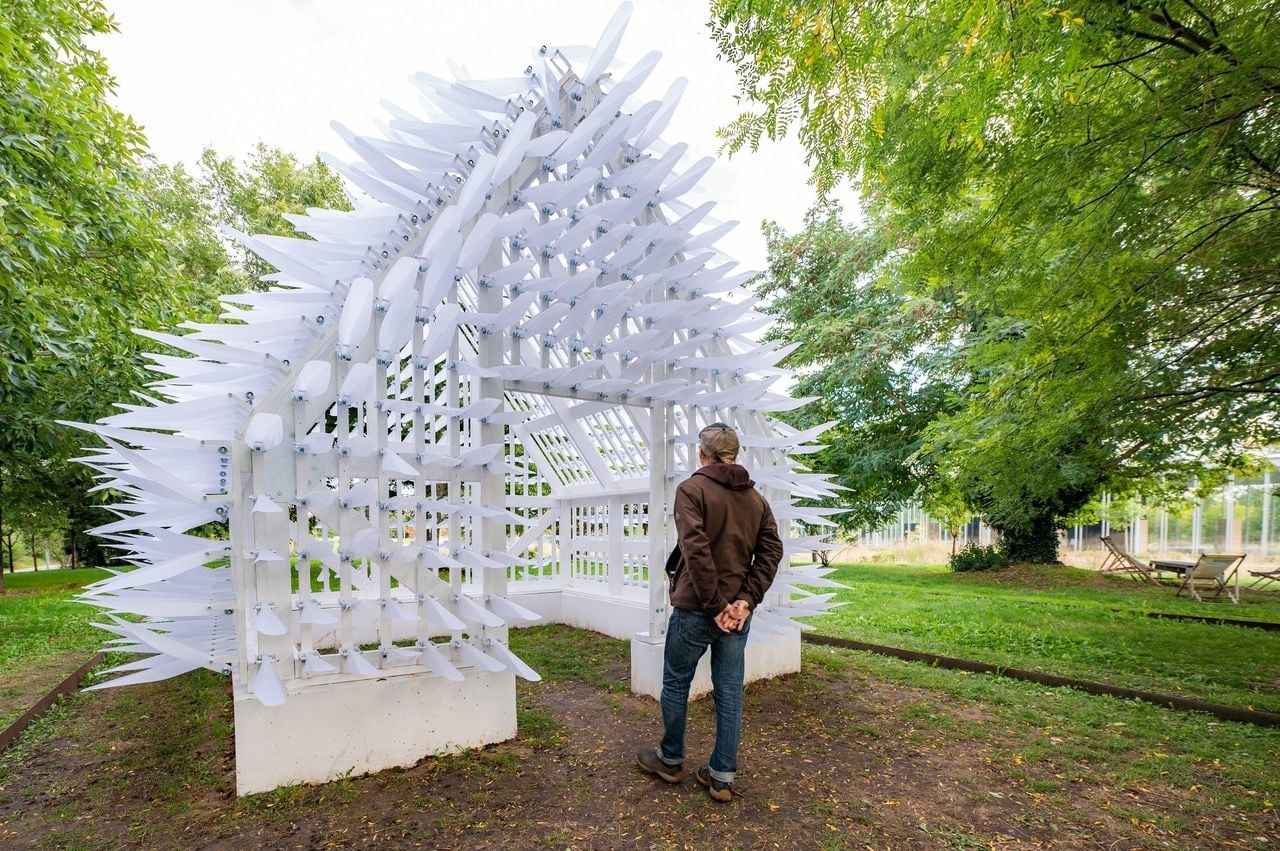
The translucent white shingles are counter-weighted and attached to the exterior of an open-air gabled building frame using bolts that allow them to flutter up and down. When the wind blows or rain falls onto the shingles, they move, either slowly or rapidly, all together or in waves. This “shivering” makes the cabin seem like it’s directly responding to the weather conditions.
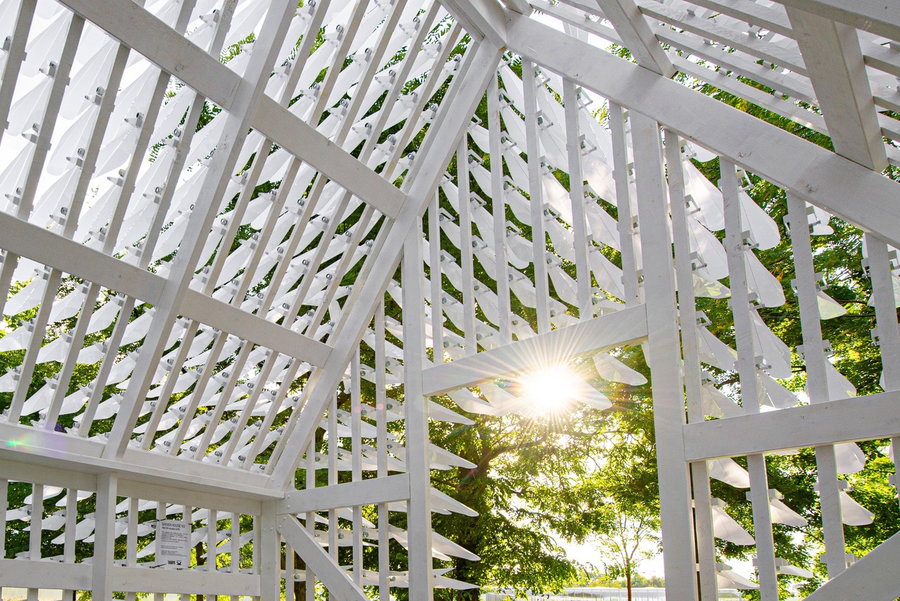
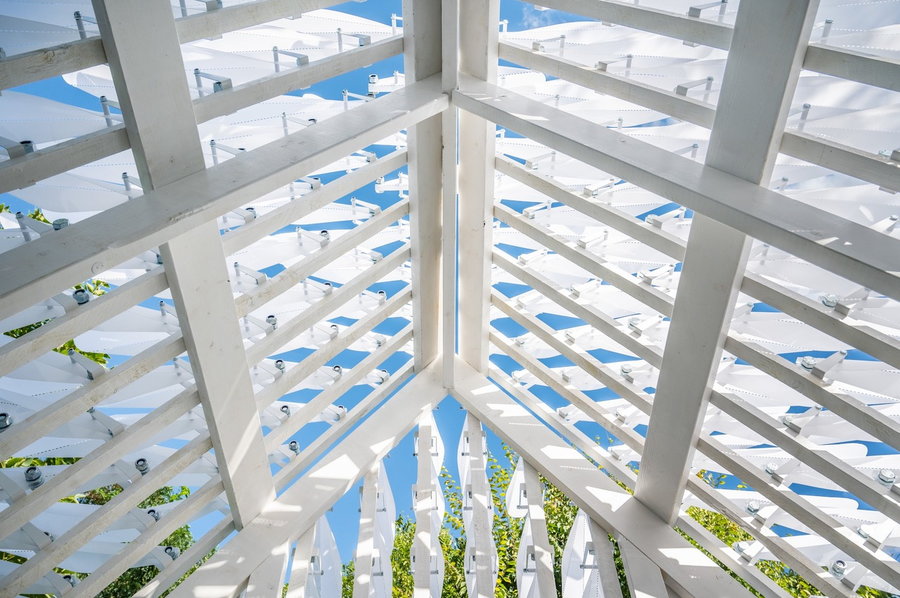
“She seems to have a personality: sometimes calm when the breeze seems to make her breathe, sometimes angry when the gusts agitate her in all directions…This animal character binds us to her and encourages us to spend time on the spot to observe its constant transformation,” the designers explain.
“It anchors visitors in the present moment. Its movements allow us to see, hear, and feel the wind more acutely. We are also connected to the surrounding trees, whose simultaneous agitation we perceive more clearly. Thus, Shiver House makes us aware of the natural world around us. By anchoring us in the present time and connecting us to nature, this cabin does us good!”
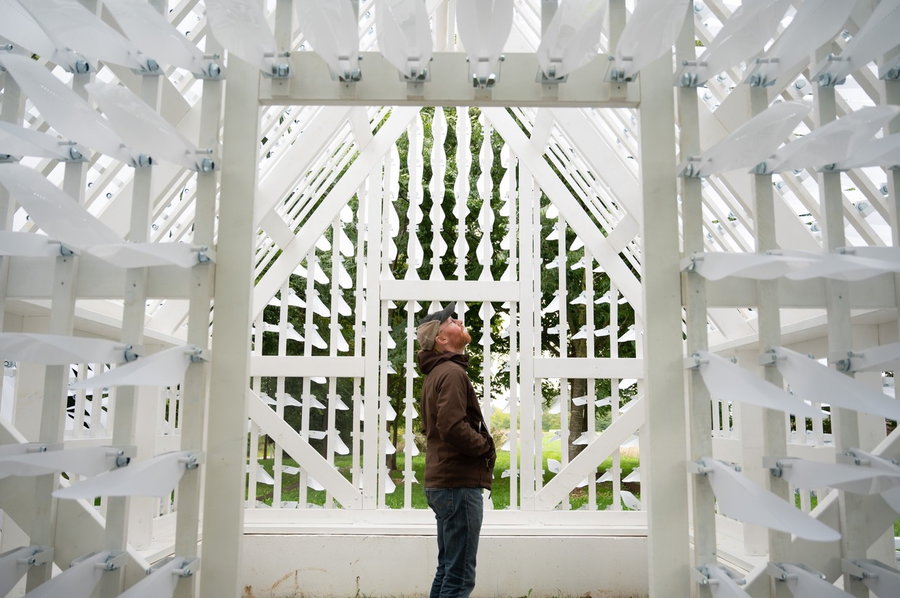
The movement keeps the installation in a constant state of transformation, holding visitors’ attention and hopefully creating a closer emotional link between them and the natural world where the hut is located. The structure builds on the success of previous iterations of Shiver House installed in Finland. This one is designed for longer-term use, and will sit within the park of Louvre-Lens for years to come.
The installation is the result of a collaboration between engineers Elliott Wood, NEON, and Odysee des Cabanes, a project that invites architects, landscape architects, designers, and visual artists to interpret landscapes through specially designed cabins, offering users the possibility of sharing moments of play, relaxation, discovery, or discussion.

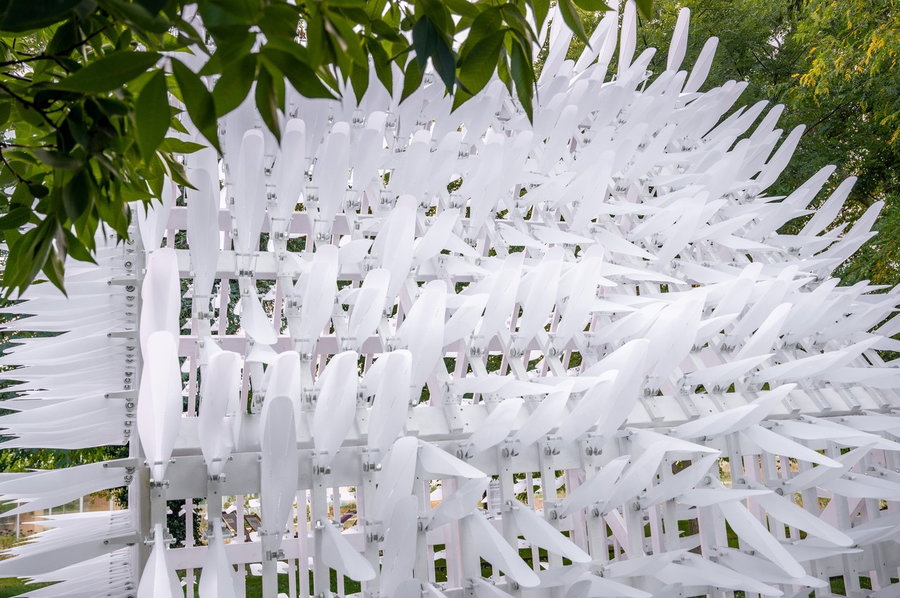
NEON artist Viliina Koivisto and architect Mark Nixon founded their studio as a way to encourage playful interaction between art and everyday people. “We empathize and listen to ensure our projects resonate with people who use them,” they say. “We manipulate familiar materials in ways previously unimagined. We design with every sense in mind. We deliver once-in-a-lifetime emotional experiences.”
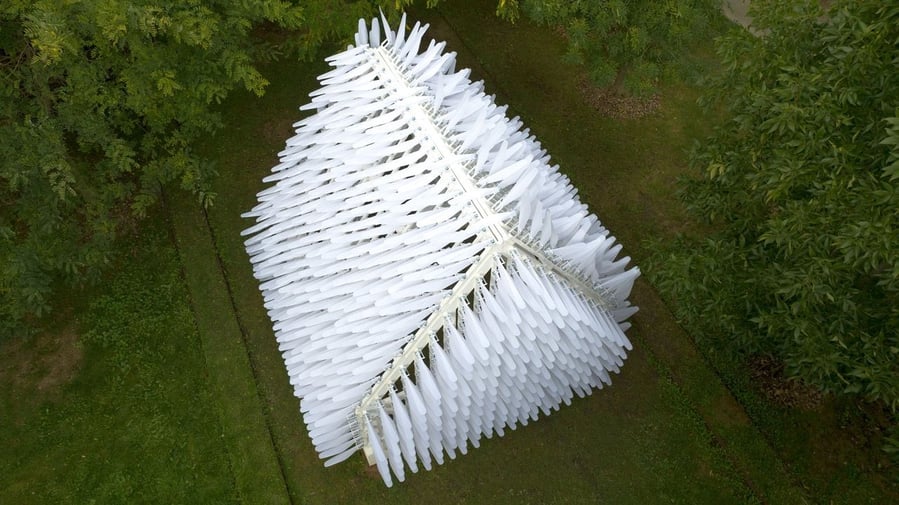
Inaugurated in 2012, the Louvre-Lens was created as a new off-site museum where an innovative approach to art could be developed from scratch. Located in the Nord-Pas-de-Calais region, the museum was designed by Kazuyo Sejima and Ryue Nishizawa from Japanese architecture studio Sanaa, and its main exhibition space, the Galerie du Temps, houses over 200 artworks on loan from the Louvre in Paris. Additional works like Shiver House V2 are located on its grounds.




